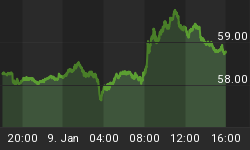Returning to our discussion of the various trading ranges that have developed in several major markets this year, it's clear to see the financial regulators are trying to keep inflation from over-heating this year as the financial system cannot bear another white-hot commodities inflation year. A respite is needed and we've already seen the first signs that the needed "pause that refreshes" is upon us.
The Fed's stated goal is to stabilize the economy and prevent inflationary pressures from gaining ascendency. After an explosive 3-year run, commodities have entered a "cooling off" phase in response to the Fed's attempts at putting the U.S. and the global economy back into balance.
Speaking of inflation, the Financial Times reports that the Bank of Japan is poised to abandon its forecast of a return to inflation this fiscal year, delaying an exit from zero interest rates until March 2007 at the earliest. The BOJ apparently believes that "deflation is not over yet" and the BOJ's deputy governor told the Times his bank would reverse its prediction that the Japanese economy would climb out of deflation this year by registering a consumer price rise of 0.1 percent. Instead it would predict more deflation, he told the Times.
This shows us that the long-wave worldwide deflationary trend (K-wave) is still with us and should succeed in keeping inflationary pressures from getting out of hand when they arise from time to time. Whenever the central banks try to reflate the major economies, including the U.S., K-wave deflation is right there to put pressure on top of prices before they threaten to skyrocket to ridiculous extremes. Remember, the K-wave is tentatively scheduled to bottom along with the Kress Master Cycle of 120-years around 2012-2014. We've still got a ways to go before we get there.
There is so much debt out there - to the tune of trillions of dollars - that whenever the Fed starts pumping the liquidity pump like they did from 2001-2004, instead of that money being used to pay down the excessive debt levels is only used to add even more debt. While reflation does resuscitate the economy to an extent and lift consumer spending, consumers have a relentless tendency to take on even more debt in different forms. The Fed is slowing down the money supply rate of change (ROC) as we've noted in recent months, among other reasons, to keep the debt bubble from over-expanding too quickly.
You see all these ads on TV, radio, etc., imploring the consumer to "get out of debt now," meaning personal credit card debt. That's a dominant message right now in the mainstream press. The economy can't have its next wave of euphoria until some of that outstanding debt is amortized, and I suspect the Fed is goading consumers into clearly up their balance sheets somewhat by slowing down the money supply ROC. This will force them to cut back on discretionary purchases and credit card binging.
Another thing that doesn't bode well for debtors is the recent Senate approval of the Bankruptcy Reform Bill, which, in the words of tax expert Dan Pilla, "will negatively affect the rights of citizens with large credit card debt." The days of the debtor being protected at the expense of the creditor are coming to an end. This recent passage of the bankruptcy bill is yet another sign that the regulators are trying to keep the consumer debt bubble from popping prematurely.
Business Week did a 2-page spread last week titled "Tough love for debtors" about credit card rules that will raise minimum payments for debtors. According to BW, because of a crackdown by the Office of the Comptroller of the Currency, "most banks and credit-card issuers will ratchet up required minimum monthly payments over the next 12 months or so," adding that in the future, "the payments must cover all fees and interest and pay down at least some of the outstanding borrowing." Monthly payments on many cards will double to about 4% of balances, according to BW.
The stated goal of this is assisting debtors pay their bills in a timely fashion and slash the interest due. The actual reason is that before the next credit inflation can occur, there must first come a contraction - a temporary deflation of the credit bubble. "Two steps forward, one step back" as the saying goes. The regulators are busy paving the way for the final phase of the decennial pattern (not to mention the final integration of the global economy) which calls for a final mini-boom in 2007-2009 before the final "hard down" phase of K-wave deflation and the 120-year cycle begins.















